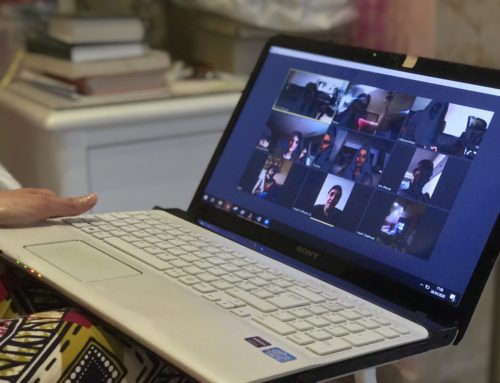 There’s an adage in public relations that there’s no such thing as bad publicity.
There’s an adage in public relations that there’s no such thing as bad publicity.
But while this might be true if you’re a celebrity or a political candidate, bad publicity can have dire consequences for nonprofits.
When you manage the reputation of a nonprofit that is working to advance an important mission, incorrect information — particularly if it’s reported in the media — can damage your ability to raise money and effectively advocate for change.
This is especially true in a digital media world, where errors can take on a much longer life than ever before.
In the pre-Internet days, most mistakes would disappear quickly from the public’s consciousness — seen only by those who watched a live newscast or read a story in print.
But today’s errors can have a lasting footprint. A news story about your organization can score high in online search rankings for years — meaning that every time someone searches your nonprofit’s name on Google or on your local newspaper’s website, they will be exposed to that mistake.
With that in mind, it’s more important than ever to attempt to get mistakes corrected.
Unfortunately, most errors never get fixed — in large part because those who notice the errors never speak up. A 2009 piece in Nieman Reports estimates that only 1 in 10 news sources actually reach out to newspapers about errors they’ve identified.
While that figure is now a bit dated, my own conversations with communications professionals suggest that it hasn’t changed much. Many groups just assume their complaints won’t be heard — so they stay silent.
However, as a nonprofit communications pro, you shouldn’t be shy about reaching out to the media when they get something wrong.
Even if it doesn’t yield an immediate correction, reaching out to a reporter or editor can help plant a seed for future coverage of the issue.
So how should you approach news outlets that miss the mark?
Your approach should depend, in part, on the nature of the inaccuracy. Some errors are very clear (a misspelled name or an incorrect number). Others are more open to interpretation.
Here is a high-level guide to help you navigate some common situations involving inaccurate, or incomplete, reporting.
Factual Errors
Most journalists strive to get it right. While there are bad actors who masquerade as fair-minded reporters and editors, most of the journalists who I’ve worked with are genuinely concerned about accuracy and will agree to hear out a source who believes that they got something wrong.
If you’ve found a factual error, reach out politely by phone or email and explain the error — and why it’s wrong. If possible, provide documentation or factual materials to back up your claim.
Make it clear that you want to help them ensure that their reporting is factual and that you don’t want to see an error get repeated.
When presented with a clear error, reporters who care about their craft will make sure it gets corrected — via a written correction and by updating the version that appears online.
If the reporter is unwilling to correct something that is clearly an error, ask to speak with his or her editor.
Often, these situations are fairly straightforward and, if you approach them properly, you can use it to help position your organization in a positive light for future stories. If the reporter feels as though you are fair-minded and reasonable, he or she will be more likely to reach out in the future.
Errors of Omission
In a world where the greatest rewards come to those who can publish a story first, news organizations aren’t always as thorough as they should be in making sure they have all of the facts — or that they have taken the time to get all of the important sides of a complex issue.
This has always been a problem in the news business. When time is short, reporters can’t — or don’t — always get the whole story. Sadly, this problem has only grown worse in the Internet age.
As a result, it’s not uncommon for nonprofits to find their perspectives missing from stories that touch their work.
In these cases, it’s important not to stay silent.
While reaching out to reporters to alert them that they missed something in a story might not yield a correction, it can bring other results.
In a developing story online, it could lead to a new version that includes your organization’s viewpoint.
It could prompt the reporter to do a follow-up story.
It might also give the reporter something to think about when he or she covers a similar topic in the future.
When you approach reporters to talk about something that was left out, make it clear that you’re looking to provide a perspective that they might not have known about — or that their other sources didn’t share. Make it clear that your organization is a resource to them — and be willing to discuss ways in which they can either add to their existing reporting on the topic or ensure that they are covering the issue from all sides in the future.
Such instances can also provide opportunities to provide your own written commentary — whether through an opinion piece or a letter to the editor.
One-Sided Attacks
Today’s media climate also includes websites and other outlets that clearly espouse a partisan point of view or produce content through a particular slant.
Often, these outlets will produce pieces that twist information or leave out key facts at the expense of those who have different points of view.
Unfortunately, you can’t expect to get many of these outlets to correct a story — or give you equal time.
Nor is it necessarily wise to attempt to post a comment or agree to an interview.
But since some of these sites have a large online presence, their influence cannot be ignored. Rather than stepping into the lion’s den — and possibly getting your organization’s viewpoint trampled or twisted — it’s often best to use your own channels to tell your story and offer a counterpoint.
All of this leads me to a final point: use your own channels. While the Internet and social media have made it easier than ever for errors to spread, they also make it easier for nonprofits to speak about their work and the issues they care about.
If the media is getting that story wrong, not only do you have an obligation to try to get that story corrected — you have an opportunity to set the record straight on your website and your social media channels.
Peter Panepento is principal at Panepento Strategies, a full-service content, digital, and social strategy firm for nonprofits and socially-minded companies. He was formerly an assistant managing editor at The Chronicle of Philanthropy and a senior vice president at The Council on Foundations. He also serves as Nonprofit Marketing Guide’s adviser on public relations.





